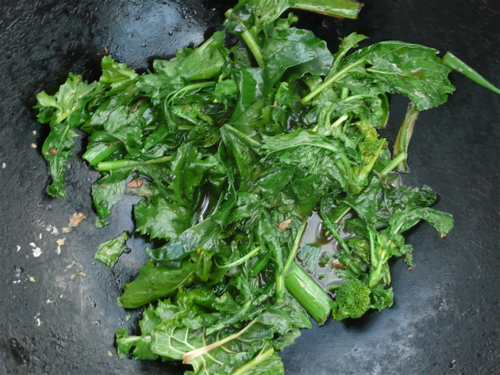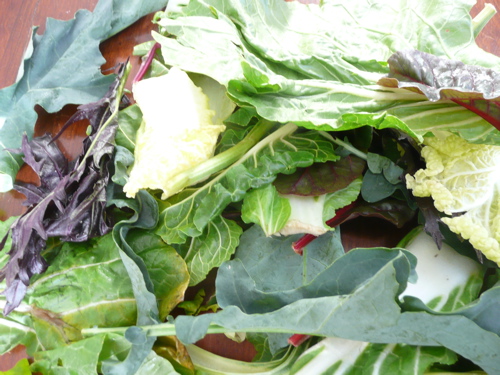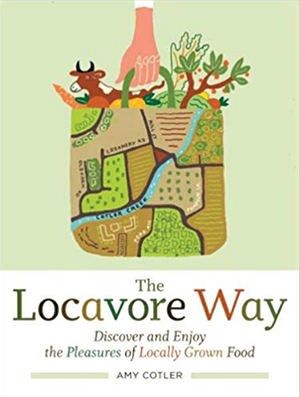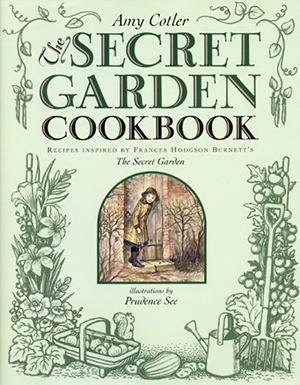Mixed braising greens from Markcristo Farm in Hillsdale, NY.

Wok-braised greens using the alternative light braise in step # 2. (I added freshly grated ginger and stock.)
Wokked or Braised Greens from The Locavore Way
CSA farmers frequently tell me that the question most asked by members is, “What do I do with cooking greens?” Here are two answers: braise or wok, both quick methods, which can be used on any greens, wild or cultivated. Braising mellows and softens hearty greens that some folks find too strong or tough, such as kale, collards, turnip greens, or mustard greens. Wokking (or sautéing) works well for more fragile mild greens, such as spinach or chard. (For more about greens see below)
This isn’t just a tight recipe — one way to cook one ingredient. Rather, it’s several simple techniques for cooking all greens, so you’re free to play with whatever greens you find.
Serving suggestions. Serve as a side dish, or enjoy for a light dinner with raw sliced red onion, toasted French bread, and local cheese. Toss with pasta solo, doubling the garlic, or add cooked potatoes and/or crispy bacon.
Makes 2 to 3 servings, easily doubled or tripled
1 bunch of any kind of cooking greens
2 to 4 tablespoons olive oil
2 garlic cloves, thinly sliced
¼ cup chopped onion or scallion (optional)
Kosher or sea salt
Vinegar or fresh lemon juice
Chicken stock (optional)
1. Remove and discard the long ends and tough spines from the greens. Tear or cut the greens into bite-sized pieces. (This step can be skipped if you are braising.) Some cooks like to roll and slice greens.
2. If you are braising. (Best for tougher greens, like kale and collards.) In a medium skillet, heat the oil and garlic until it is fragrant but not brown. Remove the skillet from the heat. Plunge the greens (and onions or scallions, if using) into a large pot of salted, boiling water, and immediately drain them into a colander. (Alternatively, if you like your greens milder, you can cook them for up to 10 minutes.) Press the water out with a spoon. (If you haven’t torn or chopped them, you may chop them a few times with a knife, although this step is not essential.) Immediately go to the wok step below or toss the greens with the garlic oil. Season to taste with salt and, if using, vinegar or lemon juice. (Alternative light braise: One of my favorite techniques. You can also braise by using the wokking/sautéing method below, then adding a small ladleful of good stock, covering and simmering the greens until tender, 1-3 minutes.)
3. If you are wokking or sautéing. (Best for fragile, mild greens, like spinach and chard.) In a wok or large sauté pan, heat the oil over medium heat. Add the garlic (and onion or scallion whites, if using). Cook, stirring occasionally, until the garlic is fragrant but not browned and the onion is translucent. Add the greens (and scallion greens, if using), and cook, turning them with tongs, until the greens are warm and wilted, about 2 minutes. Season with salt and, if using, vinegar or lemon juice. (See #2 Alternative for using this method for tougher greens.)
Variations Drizzle braised greens with a hot vinaigrette or browned butter. Wok greens with tomatoes or bacon. Season wokked greens with an Asian dressing or hot sauce.
To braise — Cook in oil, add liquid, cover and simmer at low heat. In this case it softens and mellows greens. This method is often used for tougher cuts of meats by searing it in oil, then simmering it with liquid that often includes tenderizing acid ingredients, like wine or tomatoes.
More about greens
Robust greens include collard, kale, dandelion, mustard, turnip, and broccoli rabe in the mustard family. Milder greens include spinach and Swiss chard. This recipe cooks greens up quickly, but also try hearty, long-cooked, old-fashioned southern-style greens simmered with water and smoked pork or bacon. All flavorful greens, such as collards and kale, like a touch of vinegar and plenty of salt; spinach enjoys a hint of nutmeg. Greens are great baked into savory custards such as quiches and added at the last minute to soups, stews, and stir-fries.
Where have all the farmers gone?
Slow Food’s Youth Movement
In this country the farm population has dwindled rapidly, while the average farmer’s age is on the rise. Forty percent are 55 years old or older. How will this affect the long-term health of family farms?
At Terra Madre, the UN of Slow Food that I attended as a US delegate, inspiration for the next generation working with food and in sustainable farming was provided by a series of International youth meetings and meals to share information and a common bond. For youth movement stories from around the world scan down the right hand side of this page.
I shared several meals at Terra Madre with an Iowa meat CSA farmer and her 18 year old son, who had never been out of the country. His mother told me she’d brought him to Terra Madre to get perk up his lagging interest in farming, but he seemed at once dazed and bored. One evening he walked several miles around our hotel, which was on a highway outside of Torino, Italy, to get a sense of the geography, only to find highways and factories. But by the 3rd day the light went on — youth movement meetings with kindred farmers, old and young, fed his enthusiasm for farming and gave him a context for the sustainable movement that moved him.
If we don’t bring the next generation into good, clean and fair farming, or we’ll have no great farms left!
Two delegates at Slow Food’s international Terra Madre.







Hope to meet you at the Hazon Food Conference!
Hi there, thanks for that. I was looking for a hearty stew recipe to help me get through the winter months, and this seems perfect. I found a whole stew recipes site here too that seems to have tons of ideas, maybe you can get some more inspiration there. Anyway, thanks, I will bookmark and read more another time 😉
Glad we met. Let me know what you think about the book!